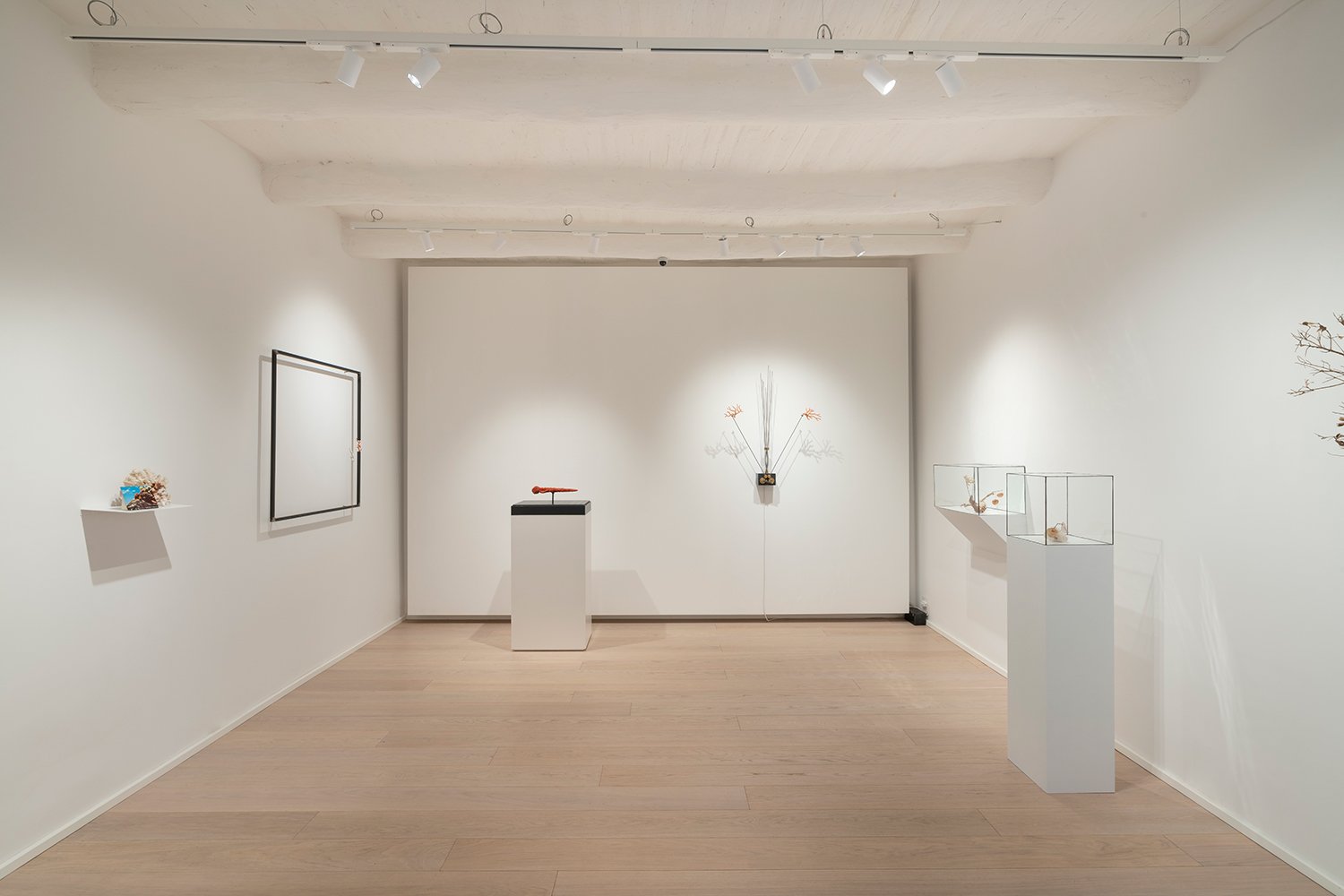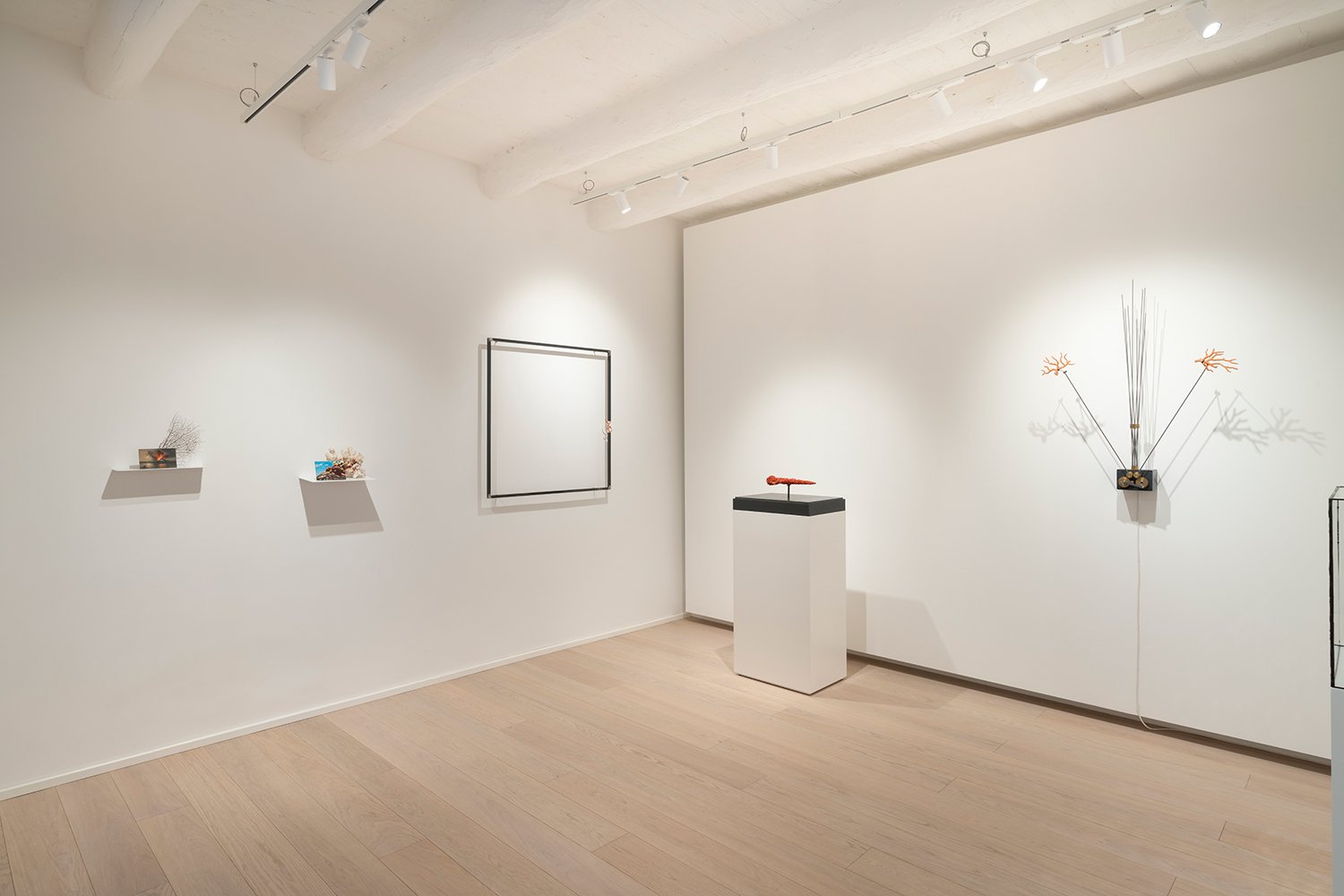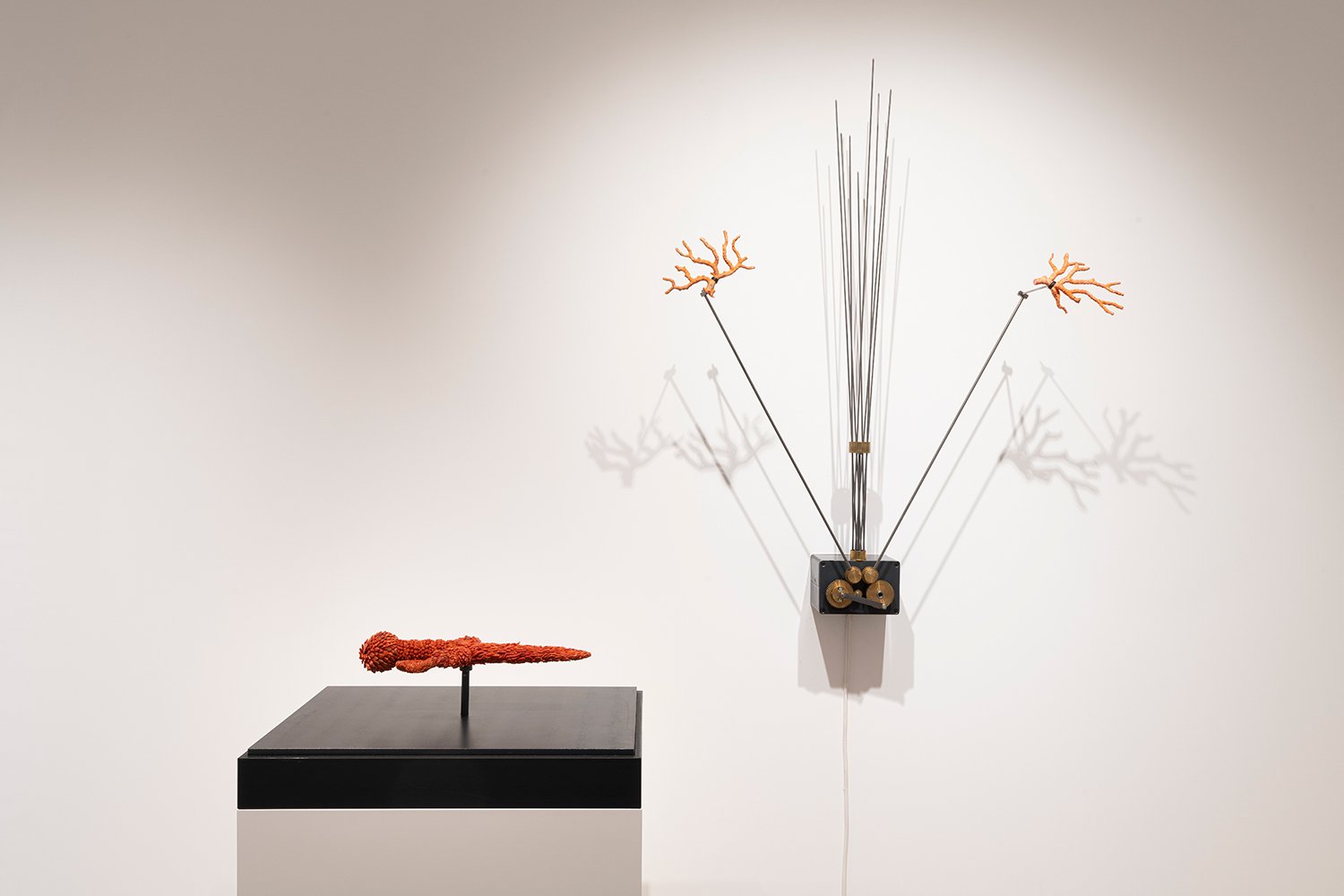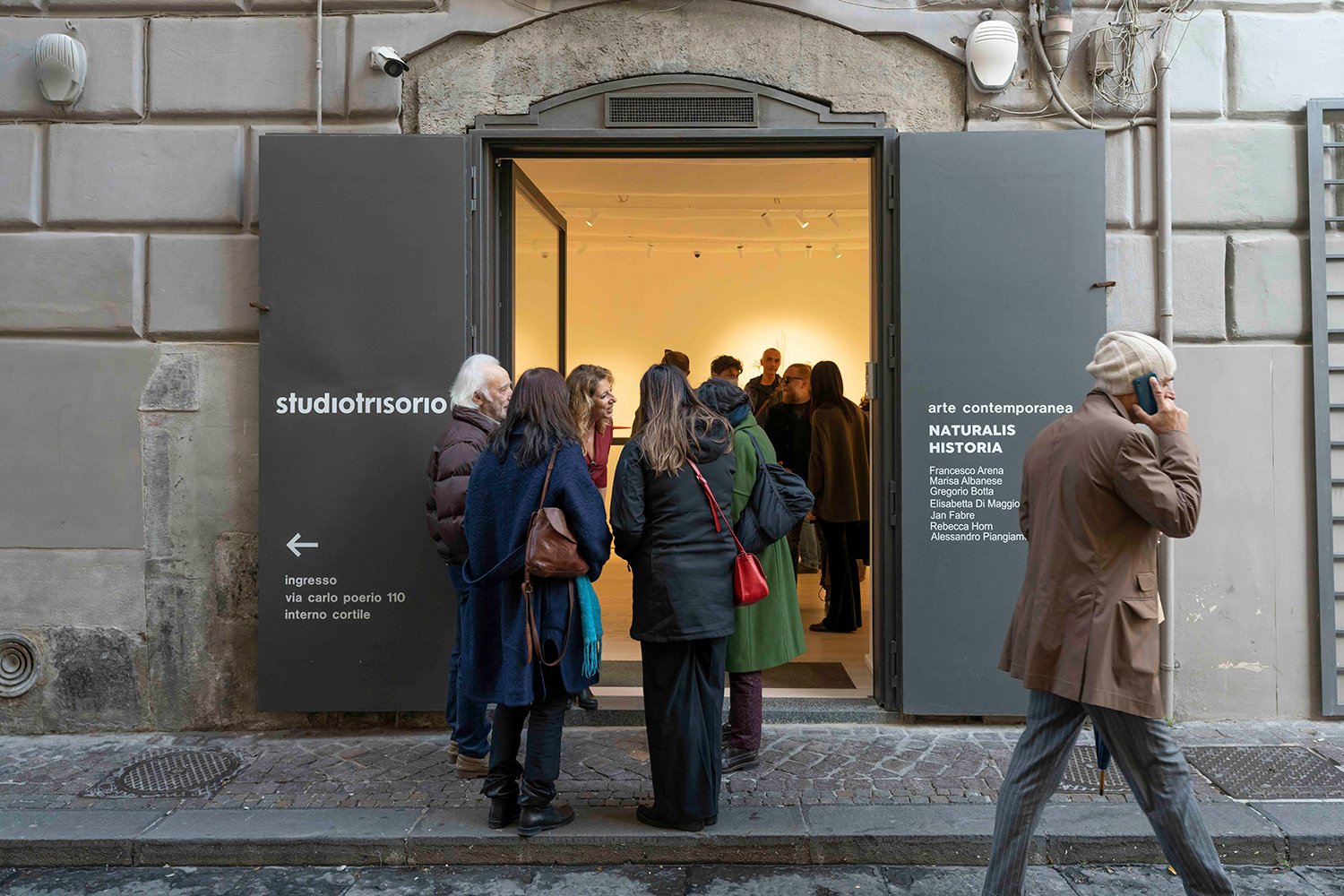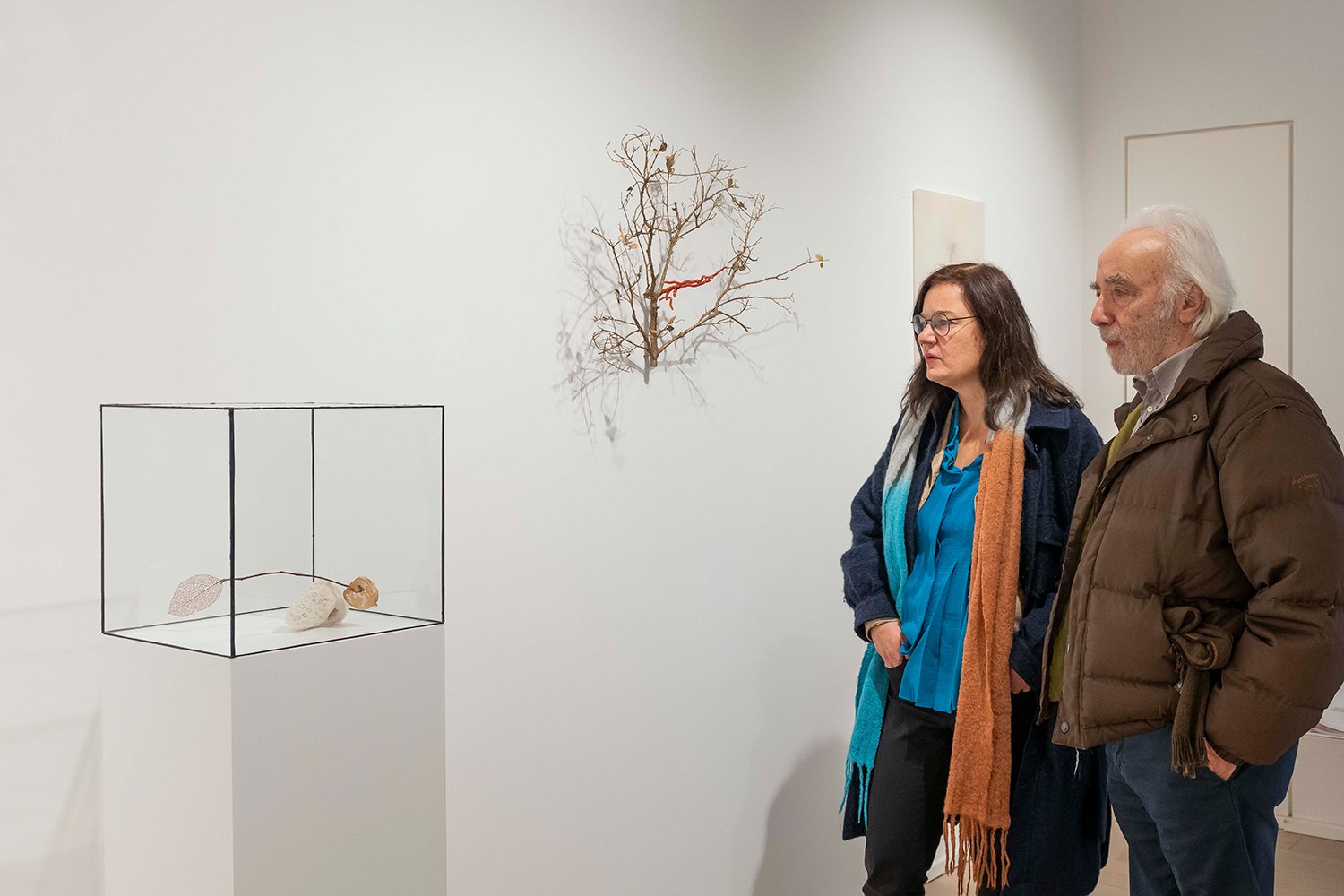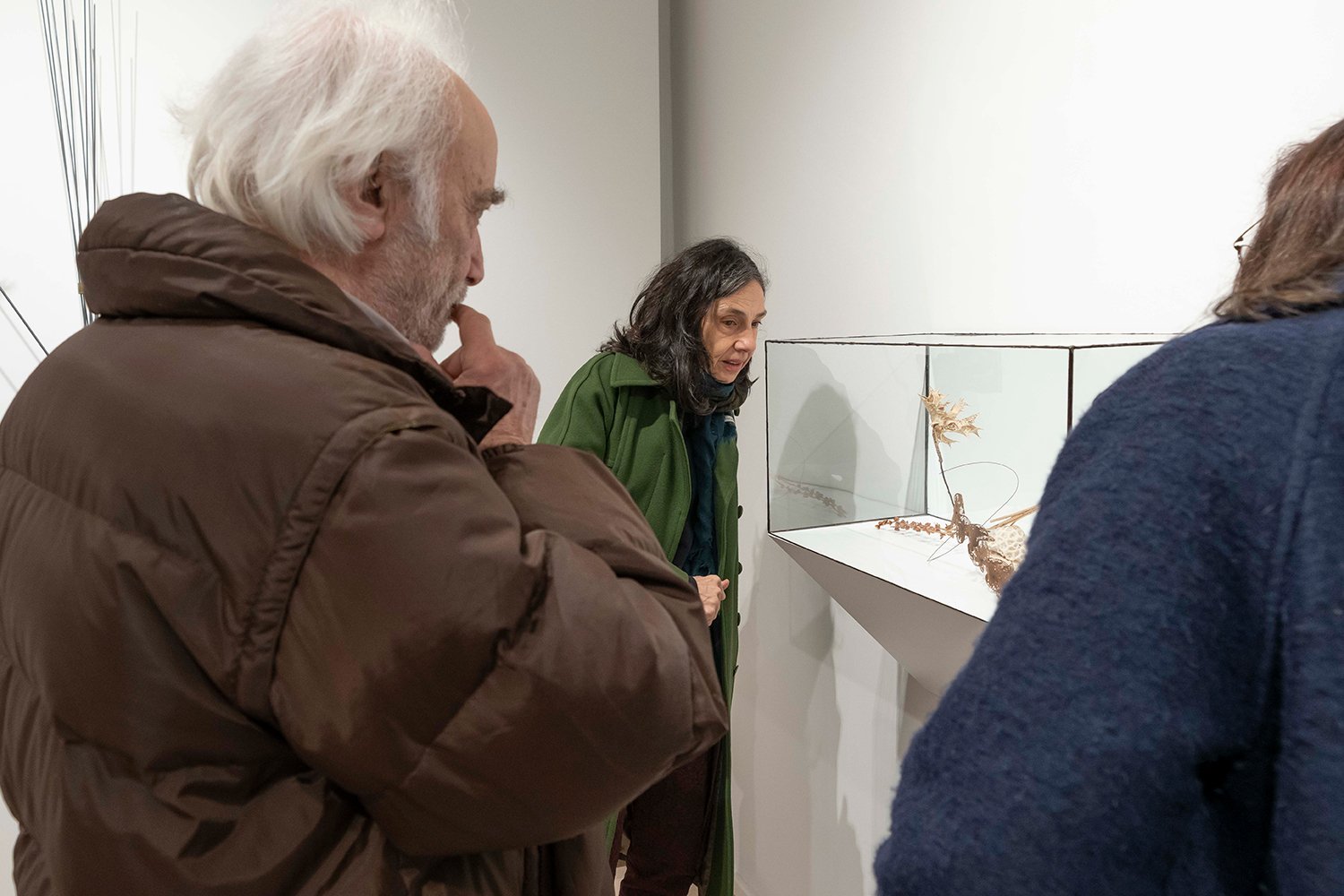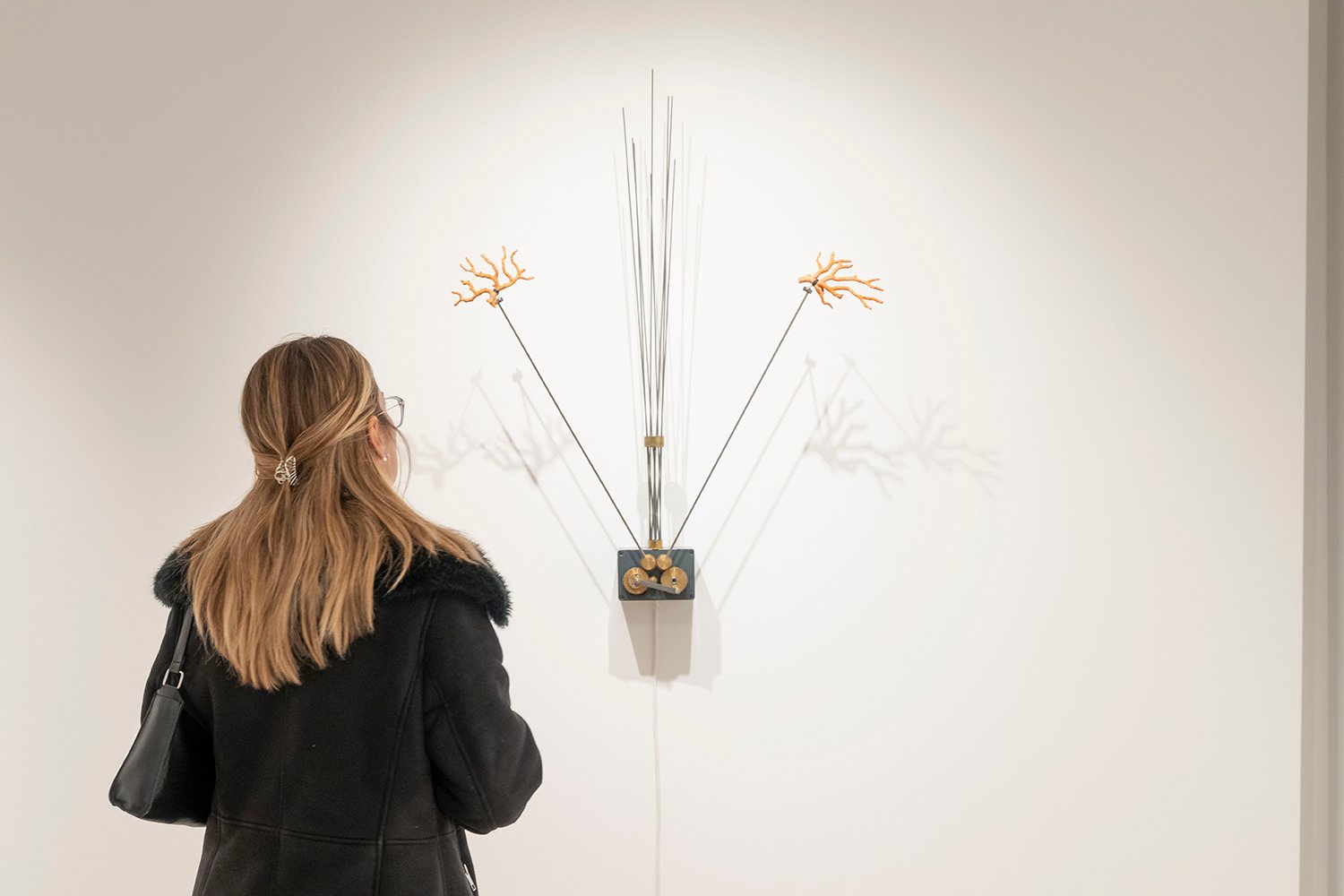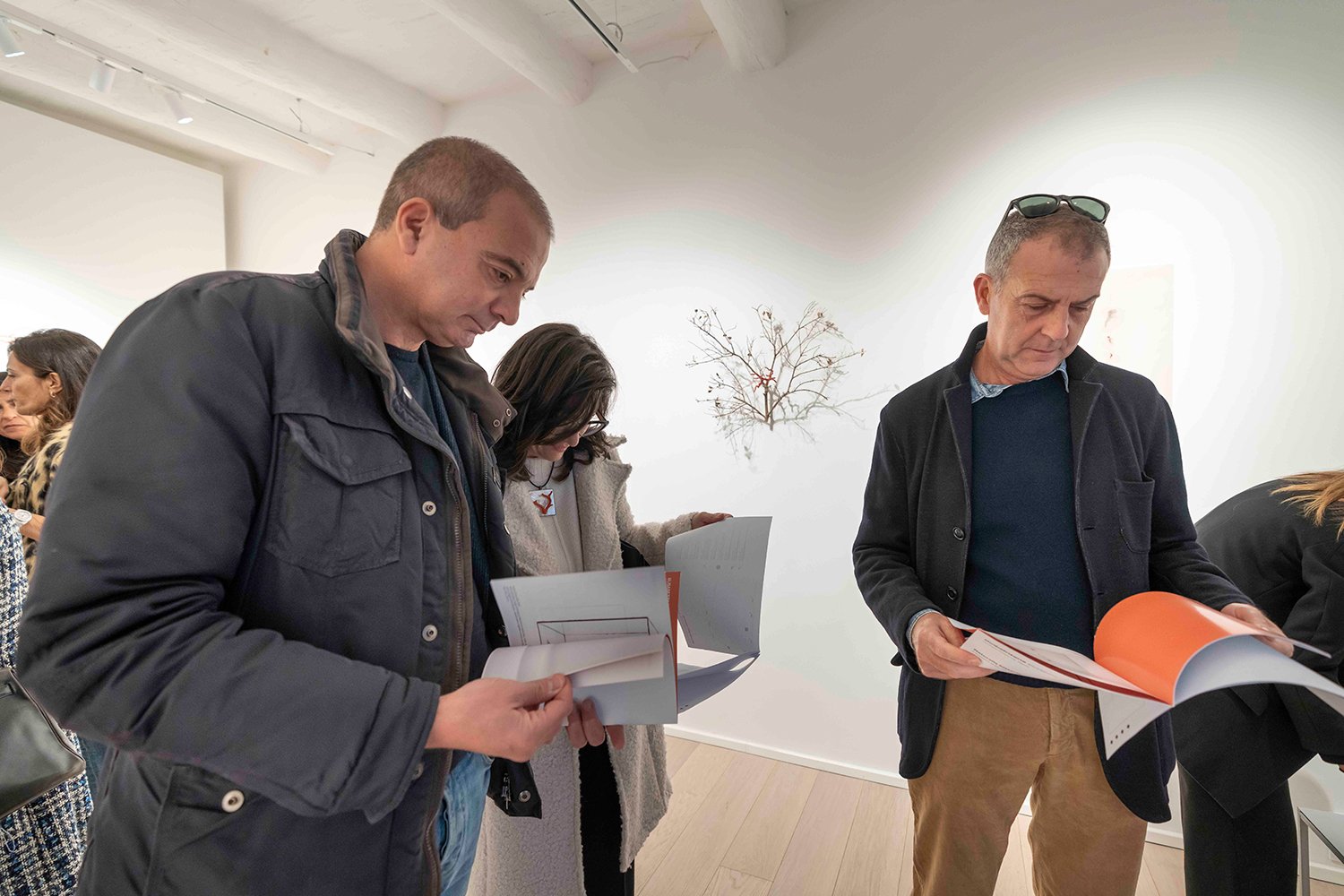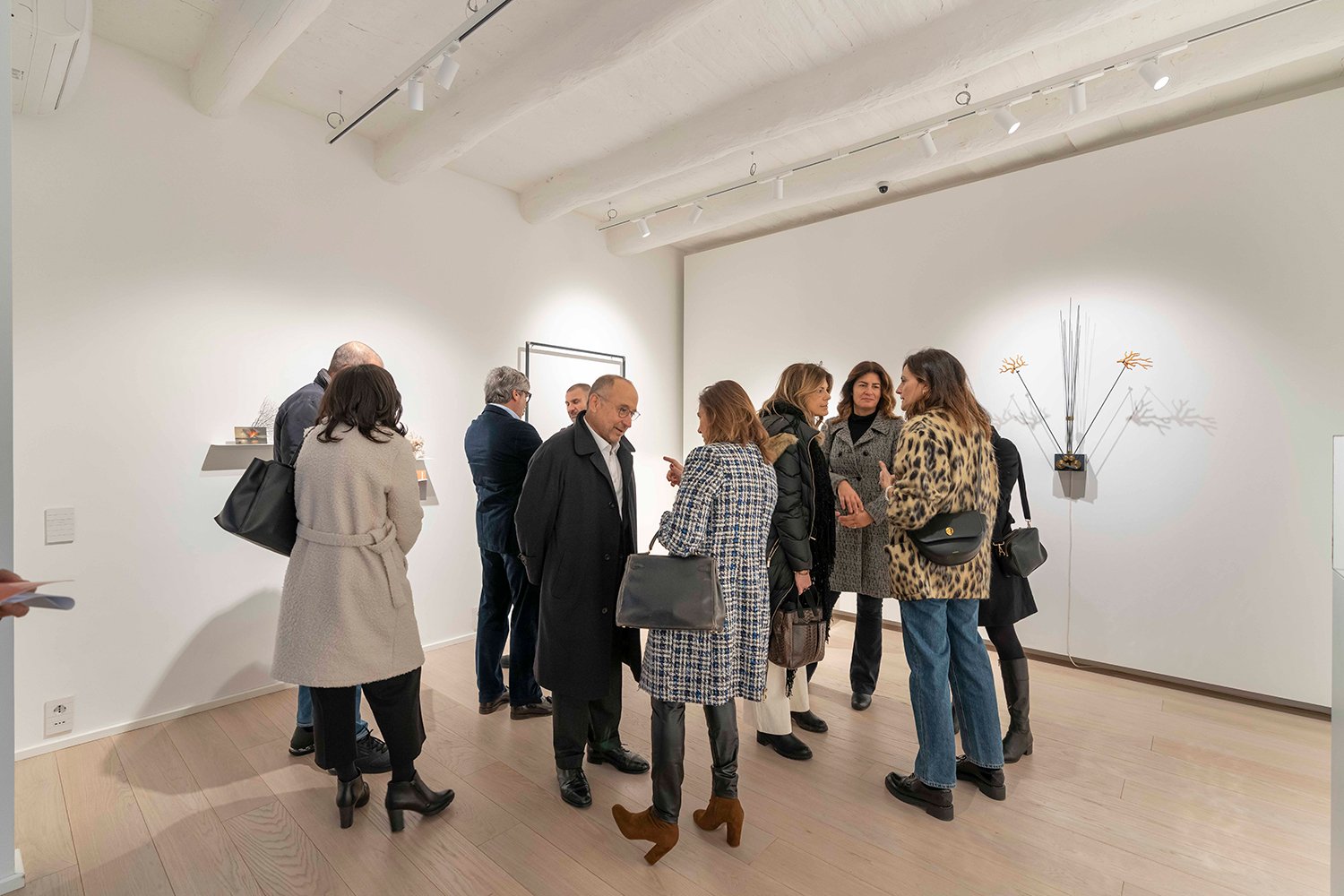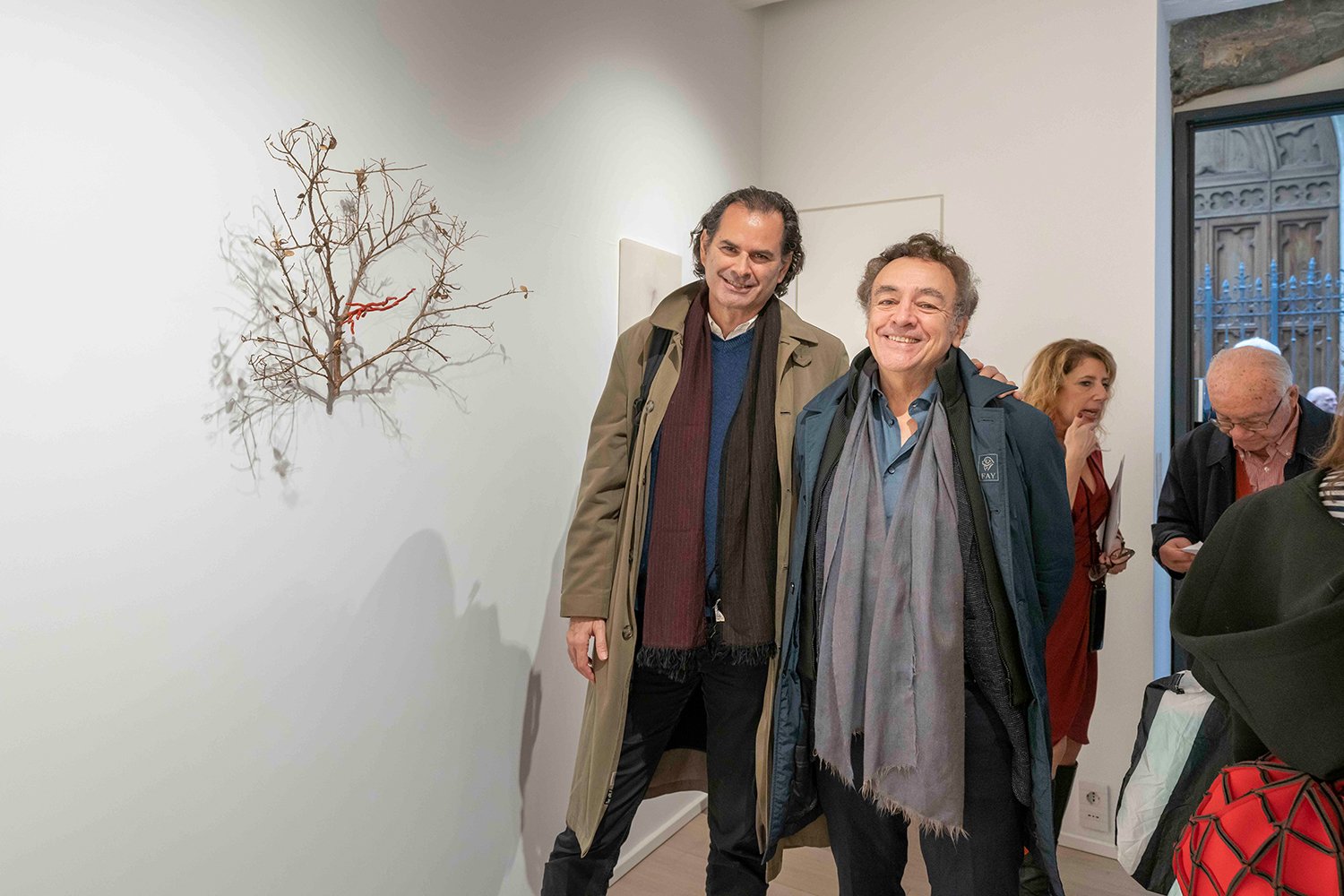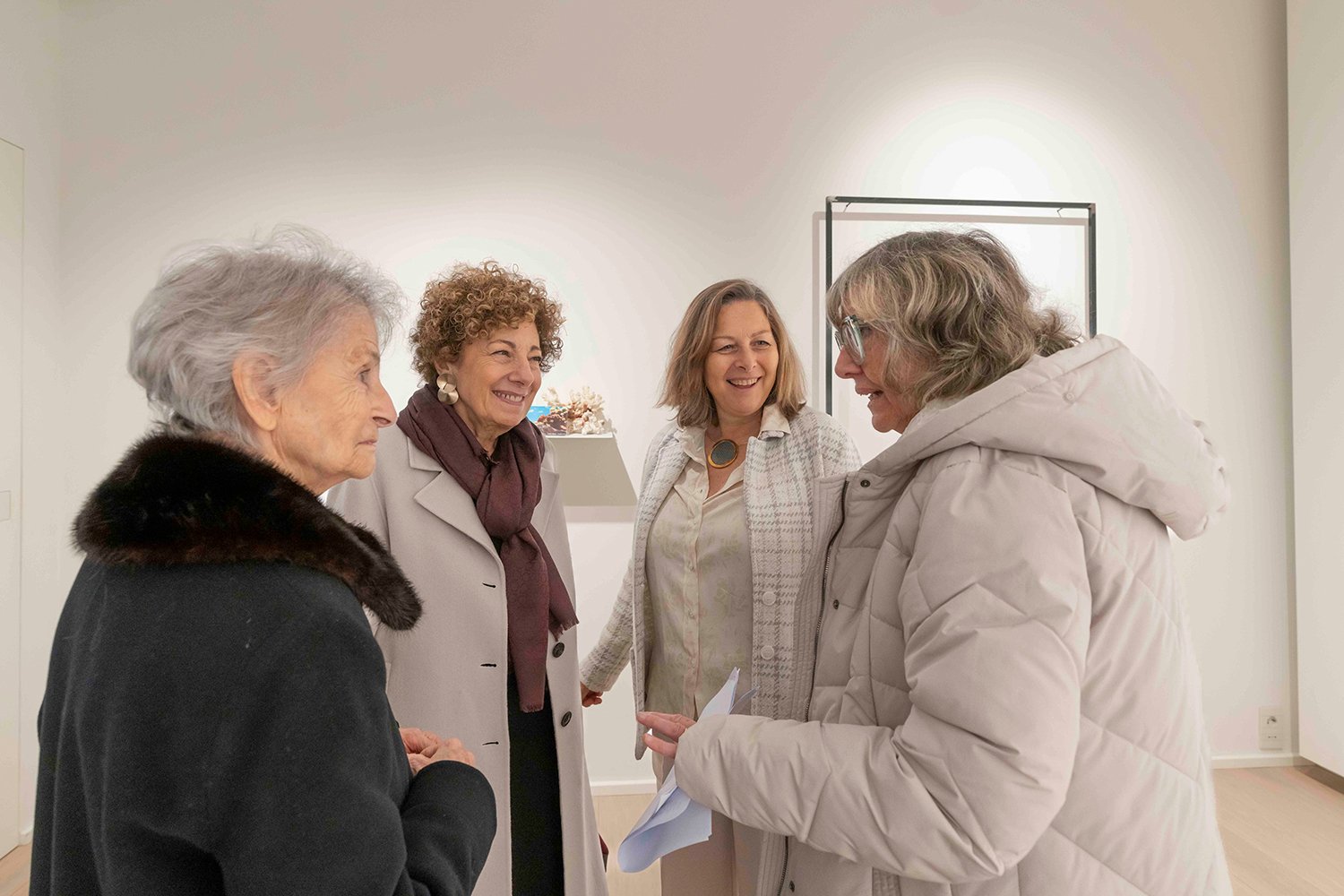Marisa Albanese, Francesco Arena, Gregorio Botta, Elisabetta Di Maggio, Jan Fabre, Rebecca Horn, Alessandro Piangiamore
Naturalis historia
December 3, 2022 — February 4, 2023
Coral is the main focus of the exhibition project and is the underlying element in the works of Francesco Arena, Marisa Albanese, Gregorio Botta, Elisabetta Di Maggio, Jan Fabre, Rebecca Horn, and Alessandro Piangiamore.
For centuries, the origin of coral has been steeped in legend: according to both Ovidio in Metamorfosi and Plinio il Vecchio in Naturalis historia, the mythical genesis of this element is said to have been generated by the contact between the Gorgon Medusa's drops of blood and seaweed.
Many magical, medical and astrological treatises, from Greek antiquity to the Baroque era, attribute therapeutic and apotropaic value to coral, and this marine organism, also referred to as 'red gold', continues to fascinate contemporary artists.
In the works of Francesco Arena's Storia Naturale series, a branch of raw coral disrupts the perfect solid geometry of a one-square-metre metal frame, symbolizing the irruption of nature's time into that of culture.
In Marisa Albanese's Paesaggio, coral is inserted into a bronze branch to emphasize the capacity of living organisms to undergo metamorphosis and coexist.
In the works of his Breath series, Gregorio Botta sets small pieces of coral in alabaster slabs eliciting the emergence of a new form.
In her works entitled Vuoti d’aria, Elisabetta Di Maggio uses a scalpel to delicately insert white Madagascar coral into fragile materials such as leaves, enhancing the hidden texture of matter and calling to mind the precariousness of relationships and the constant search for equilibrium.
In The Dagger of an Angel, Jan Fabre sheathes a dagger with numerous small horns, petals and coral roses, transforming an atavistic symbol of power and violence into a weapon in the service of beauty, a conduit for life and regeneration.
In Rebecca Horn's sculpture Die Rosenheit in der Schwebe, two coral branches are made to move by a mechanical device that slowly draws them together and then pulls them apart, evoking the gentle contact of an amorous dance.
Alessandro Piangiamore creates poetic paradoxes and hints at visual associations between coral and volcanic lava, between the destructive power of an eruption and the length of time required to form sea coral.

